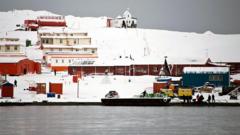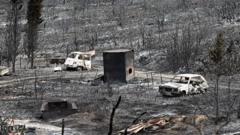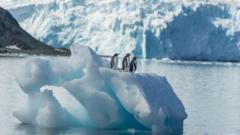Researchers have found that higher salt levels in ocean water around Antarctica are correlated with a reduction in sea ice, potentially signaling significant implications for global climate patterns.
Rising Salinity Near Antarctica Linked to Sea Ice Decline

Rising Salinity Near Antarctica Linked to Sea Ice Decline
A new study reveals that increasing salinity in surface waters near Antarctica is contributing to the accelerated melting of sea ice.
Recent research published in the Proceedings of the National Academy of Sciences has highlighted a concerning trend: seawater in regions surrounding Antarctica is becoming saltier, which is accelerating the melting of sea ice. The study, led by Alessandro Silvano from the University of Southampton, suggests that this increase in salinity is playing a critical role in the observed decline of Antarctic sea ice over the past decade, marking a shift from a previously stable growth period.
Silvano emphasized the global impact of these changes, particularly in relation to rising sea levels and intensified climate patterns. "Antarctic ice has major implications for global warming and extreme weather events," he stated, indicating that humanity may be facing the onset of a drastically altered climate system.
For decades, polar sea ice dynamics have followed a seasonal pattern of melting in summer and refreezing in winter, acting as a critical heat reflector for the planet. While the Arctic has seen a rapid loss of sea ice since the late 1970s, Antarctic ice levels surprisingly continued to expand into the 2010s.
The research team utilized satellite data alongside advanced algorithms to detect subtle shifts in brightness that correlate with salinity changes. Initially skeptical of their findings, the researchers were soon validated by physical ocean measurements that confirmed their hypothesis about rising salinity levels.
This compelling evidence suggests that the complex interplay of salinity, temperature, and ocean currents in the Southern Ocean is shifting, urging scientists to rethink their models and projections regarding global climate dynamics.


















